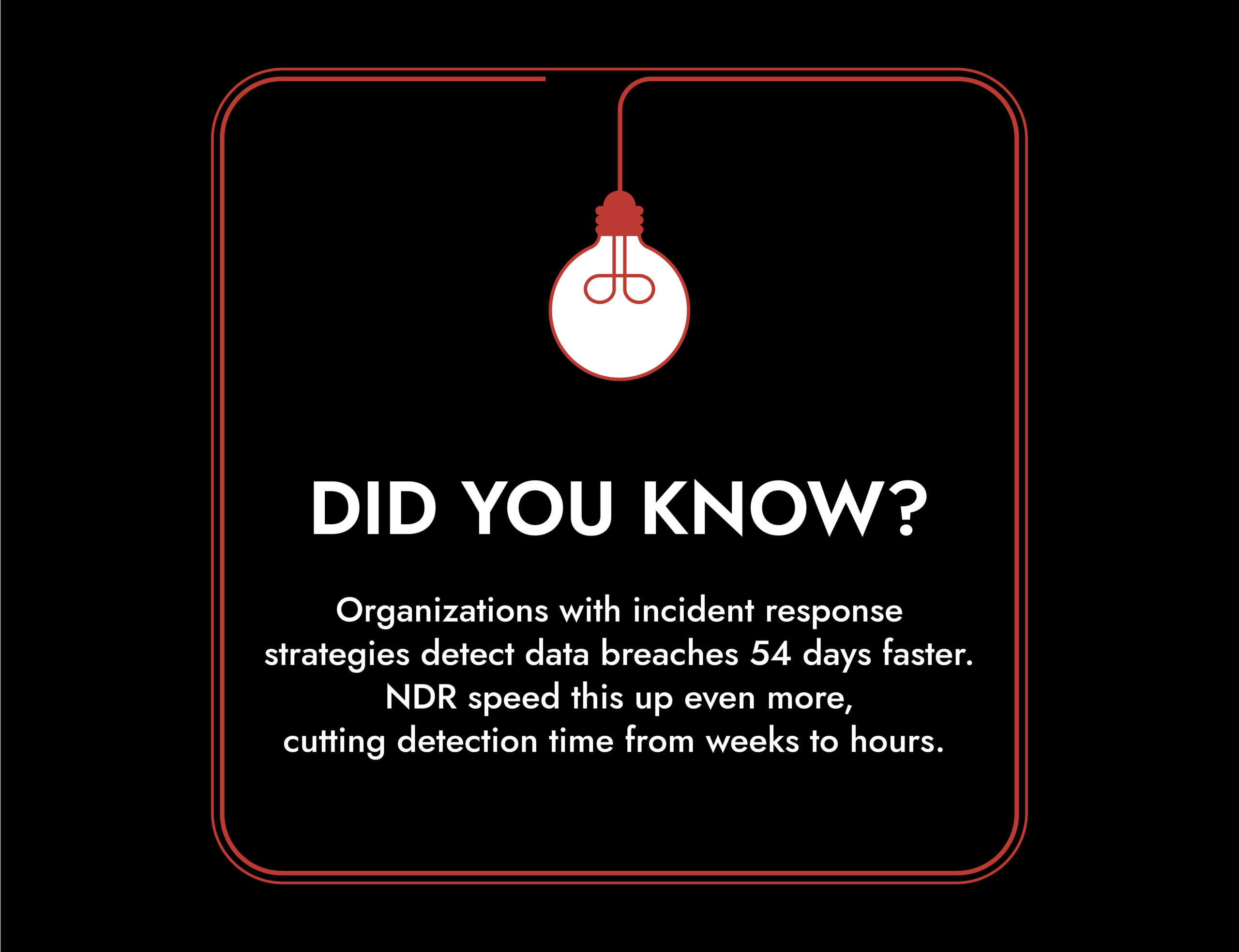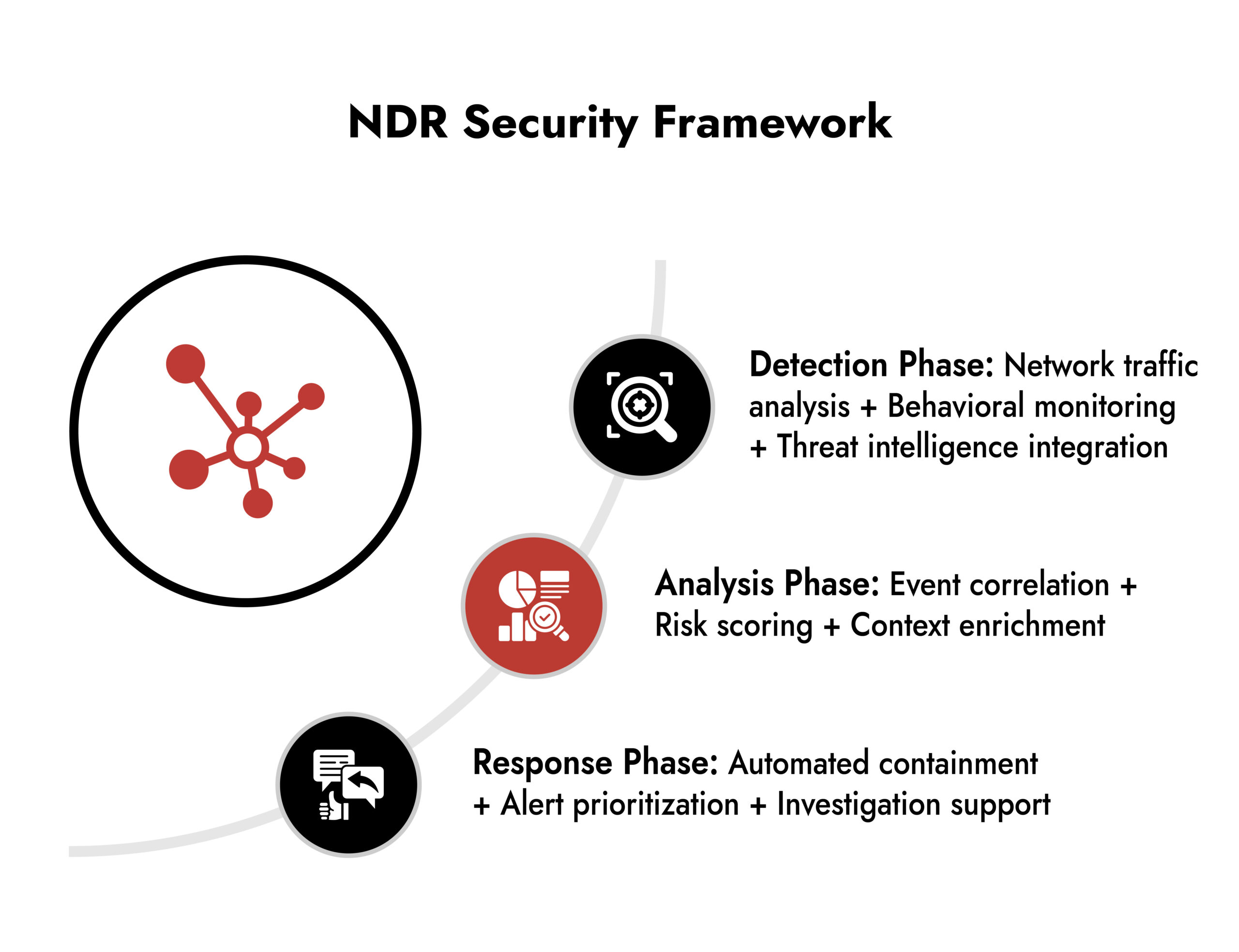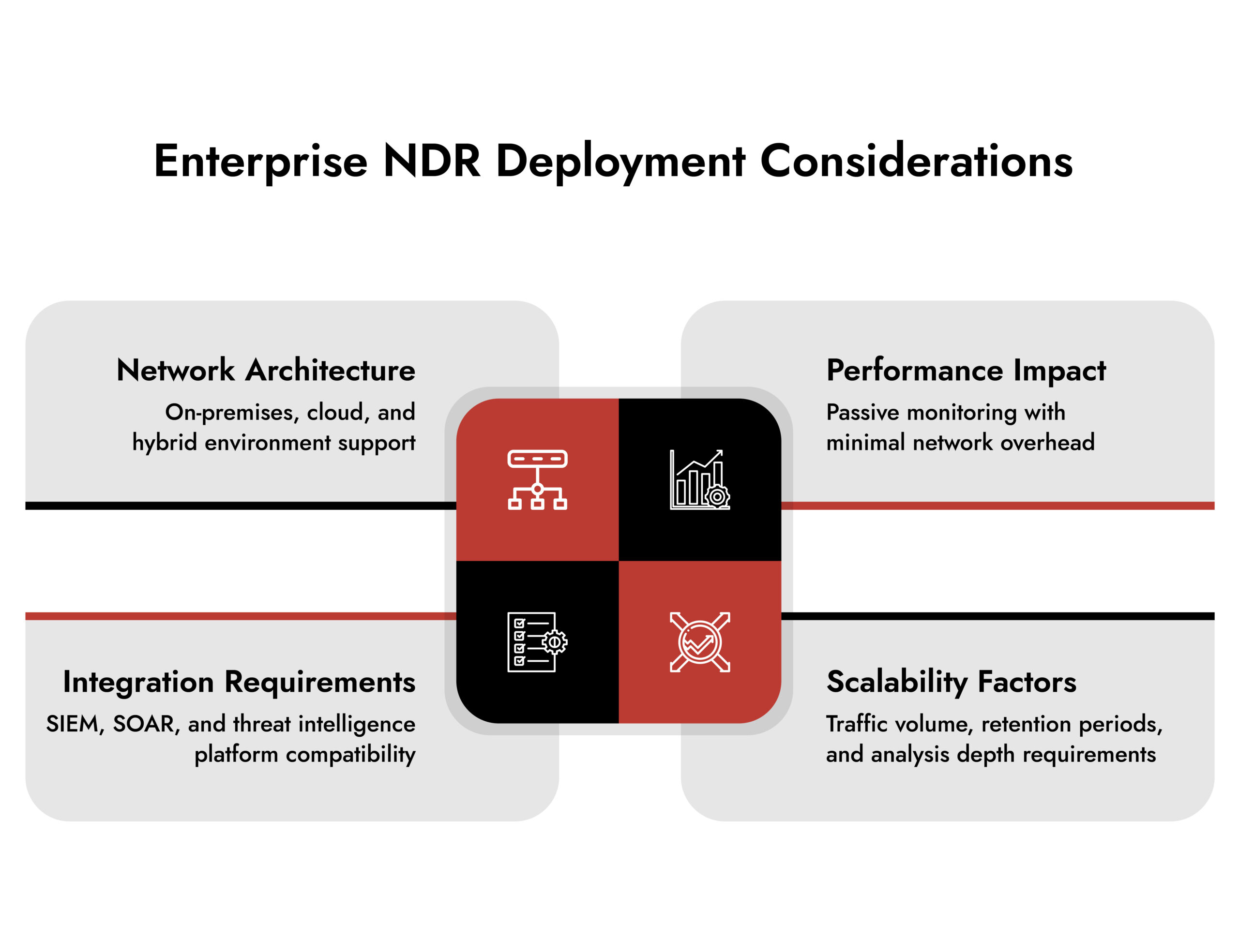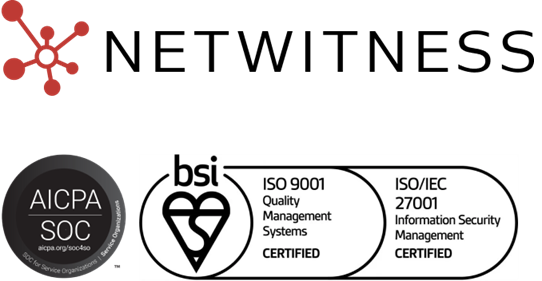The cybersecurity landscape has reached a critical inflection point. Organizations faced an average of 1,876 cyberattacks in the third quarter of 2024 – a staggering 75% increase from the same period in 2023. For CISOs navigating this escalating threat environment, traditional perimeter defenses and signature-based detection systems are proving inadequate against sophisticated adversaries who exploit network blind spots and leverage advanced evasion techniques.
Network detection and response have emerged as a foundational security capability that addresses the fundamental visibility and detection gaps plaguing modern enterprises. Unlike reactive approaches that depend on known threat signatures, NDR services provide continuous network monitoring, behavioral analysis, and automated response capabilities that adapt to evolving attack methodologies in real-time.
The Core Security Challenges NDR Address
1. Advanced Persistent Threats and Zero-Day Exploits
Modern attackers increasingly rely on sophisticated techniques that bypass traditional security controls. In 2023, security researchers identified 26,447 new vulnerabilities, with 206 having weaponized exploit code available. Advanced persistent threats (APTs) and zero-day exploits represent particularly dangerous categories because they operate below the radar of signature-based detection systems.
Network detection and response services solve this challenge through behavioral analysis and machine learning algorithms that establish baseline network patterns and identify anomalous activities. Rather than relying on known threat indicators, NDR systems detect subtle deviations in network traffic, communication patterns, and data flows that signal potential compromise.
2. Visibility Gaps in Hybrid and Cloud Environments
The rapid adoption of hybrid cloud architectures has created significant visibility challenges for security teams. Traditional monitoring tools often lack comprehensive coverage across on-premises infrastructure, multiple cloud platforms, and remote access points. This fragmented visibility leaves organizations vulnerable to threats that move laterally through unmonitored network segments.
NDR services provide unified visibility across diverse network environments by analyzing all network traffic – both north-south and east-west flows. This comprehensive monitoring capability enables security teams to detect threats regardless of their entry point or movement patterns within the network infrastructure.

3. Insider Threats and Compromised Credentials
Insider threats, whether malicious employees or compromised user accounts, represent one of the most challenging security problems facing organizations. These threats originate from within trusted network boundaries and often exhibit legitimate access patterns that make detection extremely difficult using traditional security tools.
Network detection and response services excel at identifying insider threats through continuous user behavior monitoring and credential analysis. By establishing baselines for normal user activities, network access patterns, and data movement behaviors, NDR systems can detect subtle anomalies that indicate account compromise or malicious insider activity.
How NDR Enhance Enterprise Security Operations
1. Real-Time Network Monitoring and Analysis
Effective network detection and response require continuous monitoring capabilities that operate at a network speed. NDR services utilize deep packet inspection, metadata analysis, and behavioral analytics to process network traffic in real-time without introducing performance bottlenecks.
This real-time analysis capability significantly reduces threat dwell time – the period between initial compromise and detection. Research indicates that faster detection directly correlates with reduced incident impact and recovery costs, making real-time monitoring a critical operational requirement for enterprise security programs.
2. Automated Threat Correlation and Response
Modern security operations centers face alert fatigue from disparate security tools, generating thousands of daily notifications. NDR address this challenge through intelligent threat correlation that connects related security events and reduces false positive rates.
Advanced NDR platforms integrate with security orchestration, automation, and response (SOAR) systems to enable automated response actions. This automation capability allows security teams to focus investigative resources on high-priority threats while ensuring consistent response to routine security events.

3. Integration with Extended Detection and Response (XDR)
Network detection and response function most effectively as part of a comprehensive security architecture that includes endpoint detection and response (EDR), security information and event management (SIEM), and identity and access management systems.
This integration enables security teams to correlate network-level threats with endpoint activities, user behaviors, and application access patterns. The resulting visibility provides complete attack chain reconstruction and enables more effective incident response decisions.
NetWitness NDR: Practical Implementation for Enterprise Security
NetWitness’ Network Detection and Response integrates seamlessly into existing security operations while providing comprehensive network visibility and threat detection capabilities. The platform combines deep packet inspection with metadata analysis to provide security teams with detailed network intelligence without requiring extensive infrastructure modifications.
Key capabilities include full network traffic analysis, behavioral analytics for detecting anomalous activities, and integration with threat intelligence feeds for enhanced detection accuracy. NetWitness NDR operates effectively in hybrid cloud environments and scales to meet enterprise network monitoring requirements while maintaining consistent performance levels.
The platform’s investigation capabilities enable security analysts to reconstruct complete attack timelines, identify affected systems, and assess incident scope through intuitive visualization tools. This investigative depth supports faster incident response and more effective remediation strategies.

The Strategic Value Proposition
Network detection and response services deliver measurable security improvements that align with executive-level risk management objectives. The NDR cybersecurity market is projected to grow at 25% by 2030, reflecting widespread enterprise adoption driven by demonstrated security value.
From a cost-benefit perspective, NDR services help organizations avoid the average cost of millions in data breaches by enabling faster threat detection and response. This economic benefit, combined with enhanced security posture and regulatory compliance support, makes NDR services a strategic investment for risk-conscious organizations.
NDR as Security Foundation
The evolving threat landscape demands security approaches that adapt to adversary tactics while providing comprehensive network visibility. Network detection and response services represent a foundational security capability that addresses critical detection gaps while integrating effectively with existing security investments.
For security leaders evaluating NDR solutions, focus on platforms that provide comprehensive network coverage, behavioral analysis capabilities, and seamless integration with existing security infrastructure. The investment in network detection and response services delivers immediate security improvements while establishing the visibility foundation necessary for long-term security program success.
Ready to enhance your organization’s network security posture? Explore NetWitness NDR capabilities to understand how comprehensive network detection and response services can strengthen your security operations.
Frequently Asked Questions
1. What specific types of threats do network detection and response services detect that other security tools miss?
NDR services excel at detecting advanced persistent threats, insider threats, lateral movement, and command-and-control communications that operate within encrypted traffic or use legitimate network protocols. Unlike signature-based tools, NDR systems identify threats through behavioral analysis and anomaly detection, making them effective against zero-day exploits and custom malware that lack known signatures.
2. How does NDR service deployment impact network performance and bandwidth?
Modern NDR solutions utilize passive monitoring techniques that analyze network traffic without introducing latency or bandwidth overhead. These systems typically operate through network taps or span ports, processing traffic metadata and behavioral patterns rather than full packet capture, ensuring minimal performance impact on production networks.
3. What integration capabilities should organizations expect from enterprise NDR security solutions?
Enterprise NDR platforms should integrate with SIEM systems, SOAR platforms, threat intelligence feeds, and endpoint detection tools through APIs and standard log formats. This integration enables centralized security operations, automated response workflows, and correlation across multiple security data sources for comprehensive threat visibility.
4. How quickly can NDR services detect and respond to network-based attacks compared to traditional security tools?
NDR services typically reduce mean time detection from weeks to hours through real-time network monitoring and behavioral analysis. Research shows that organizations with structured incident response capabilities detect breaches faster than those without, and NDR automation further accelerates this timeline.
5. What ROI can organizations expect from implementing network detection and response services?
NDR services deliver ROI through reduced incident response costs, faster threat detection, and prevention of data breaches that average millions in damages. The primary value comes from avoiding business disruption and regulatory penalties while reducing security operations overhead through automated threat correlation and response.




